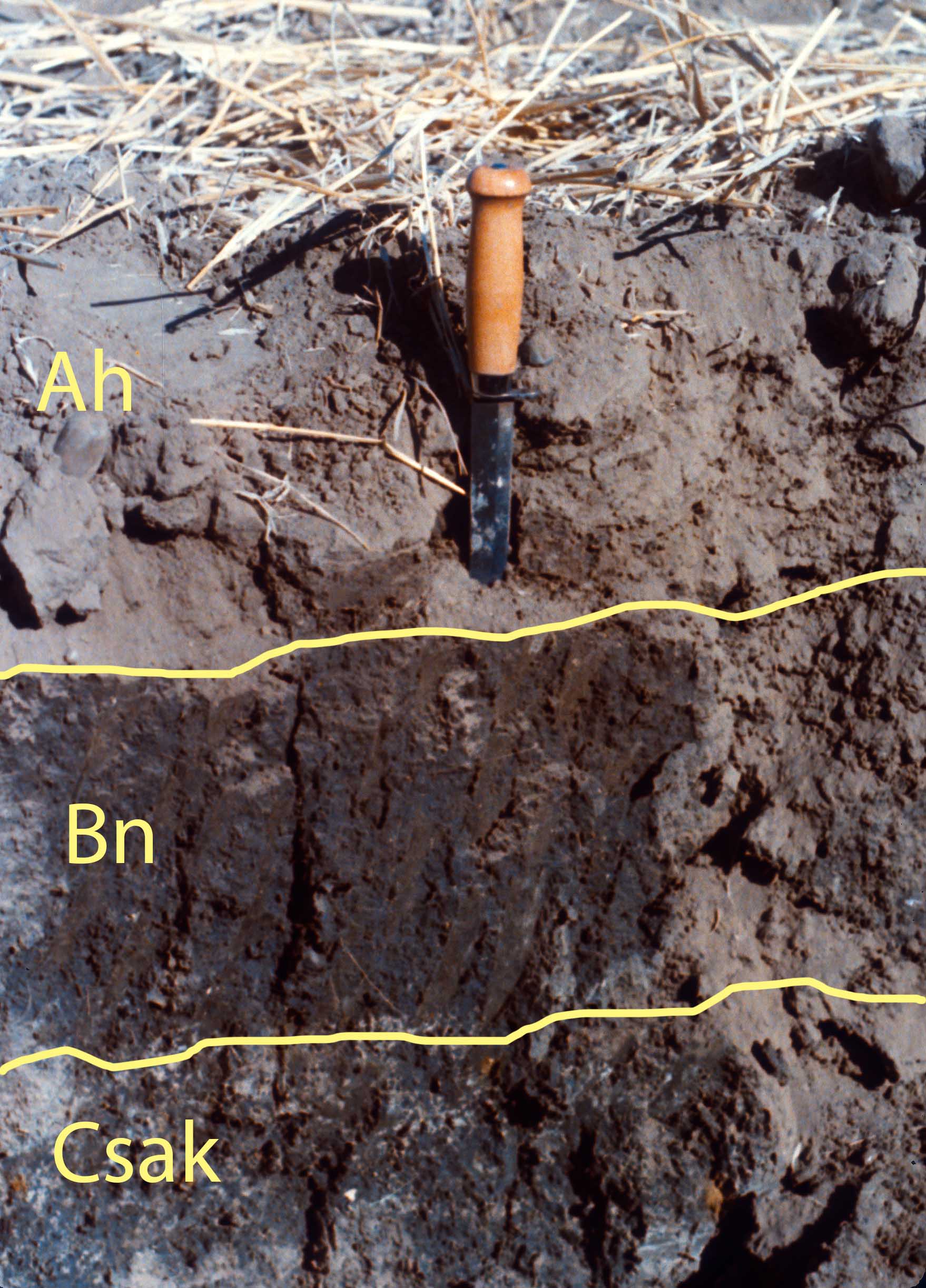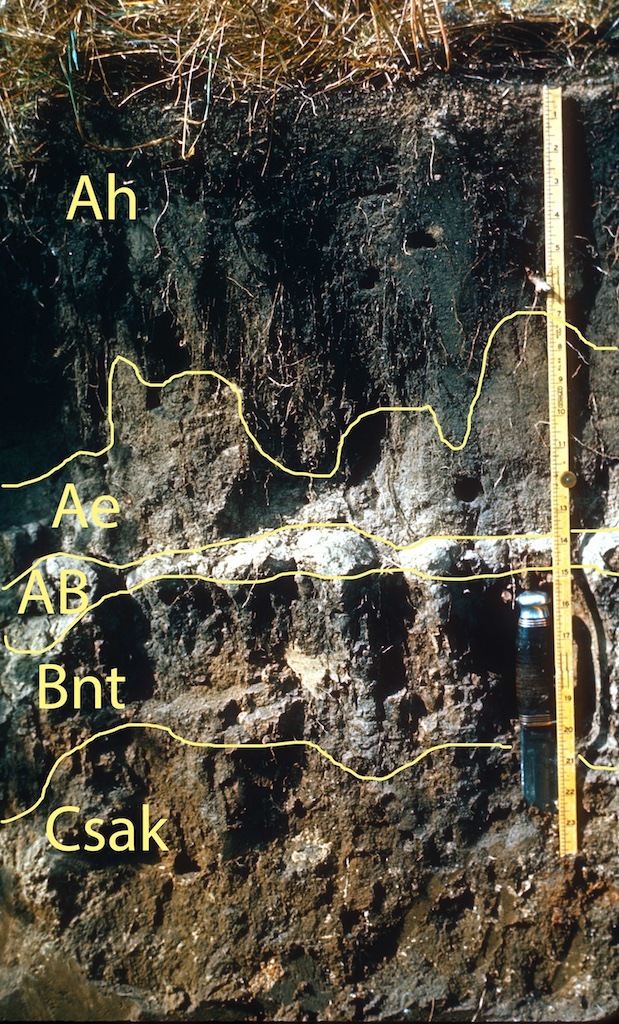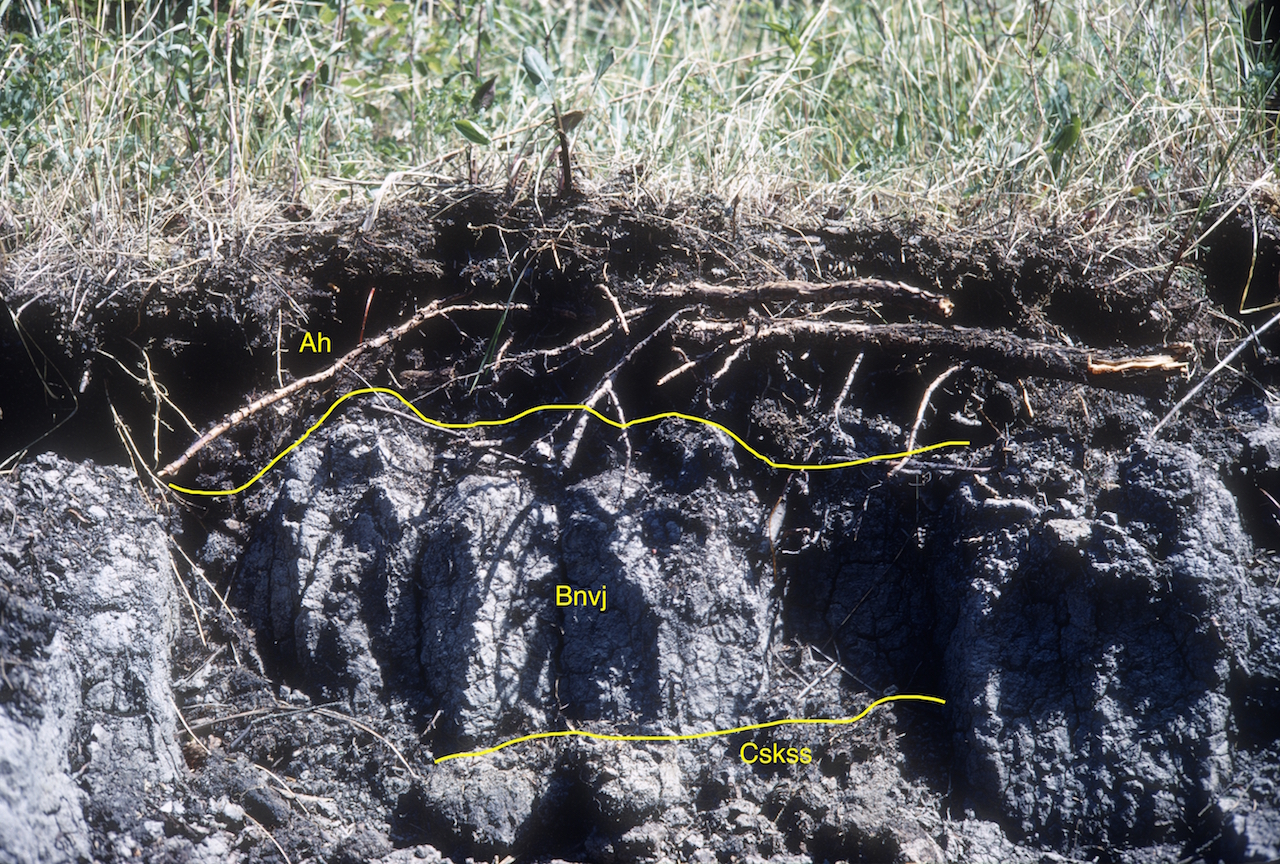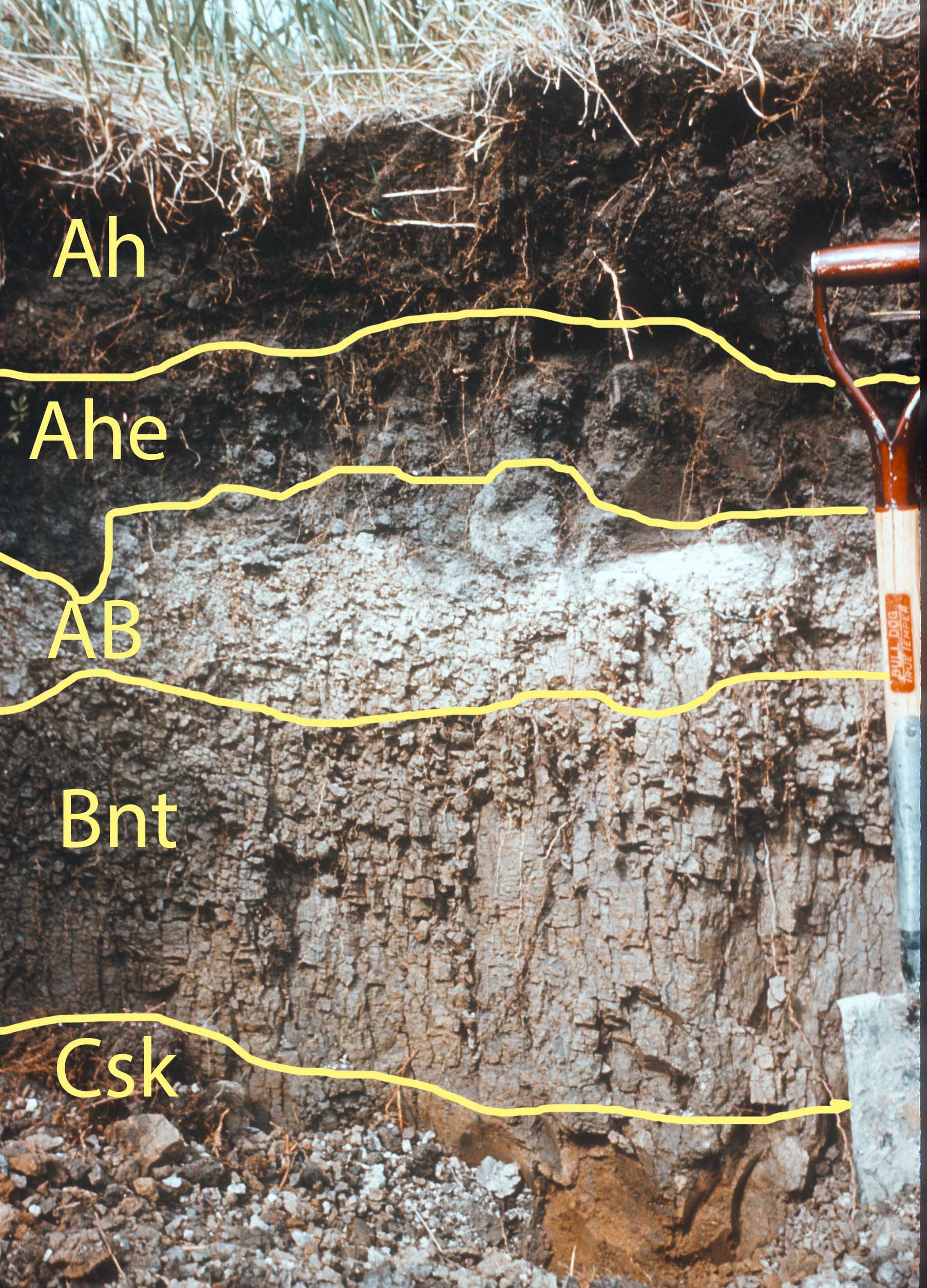Solonetz

All Solonetzic soils have high sodium concentrations in their diagnostic Bn or Bnt horizons. In the Solonetz great group only the Bn (n for Na+) horizon occurs. The Bn overlies a C horizon with salts (sa) and carbonates (k) inherited from the parent material. Both the physical properties of the Bn and the slats in the Csak combine to make this a poor soil for crop growth.
Contributor: Darwin Anderson
Location: Saskatchewan
Solodized Solonetz

In the Solodized Solonetz great group there has been movement of clay from the Ae to the Bnt horizon, creating a texture contrast soil. The dense Bnt is relatively impermeable to water (and roots!) and water sits on the top of the Bnt, which begins to disintegrate. In this soil the Ah is relatively thick, and the soil may have sufficient rooting depth for adequate crop growth.
Contributor: Roly St. Arnaud
Location: Saskatchewan
Vertic Solonetz

The soils of this great group form on high clay parent materials that undergo mixing due to shrinking and swelling of clays (v suffix). They may also have polished surfaces (slickensides, ss suffix)) on the surfaces of peds from peds moving over each other due to the mixing. They also meet the chemical criterion of Solonetzic soils (the n horizon). This slide clearly shows how roots prefer the easily penetrated Ah horizon and have difficulty penetrating the dense Bnvj. These soils are uncommon in the Prairie region.
Contributor: Darwin Anderson
Solod Solonetz

In this Solod the disintegration of the upper Bnt is quite advanced and a thick AB horizon occurs. The AB is overlain by a horizon with splotches of humus accumulation (h) and bleaching (e) – the Ahe horizon. The very strong structural development tin the Bnt is evident as the rough surface of the horizon. Again the lowest C horizon has both salts and carbonates present.
Contributor: Soils of Canada slide set
